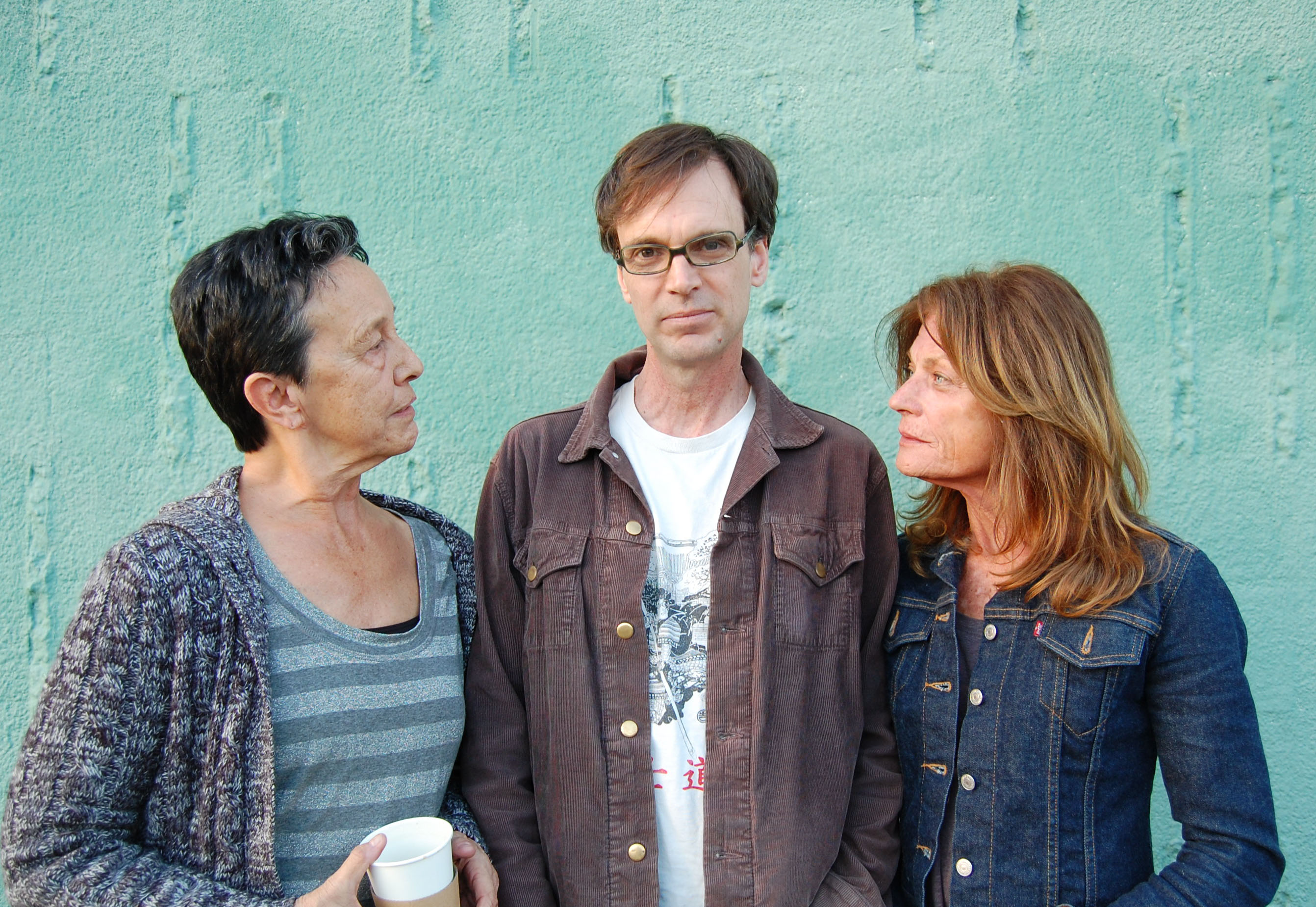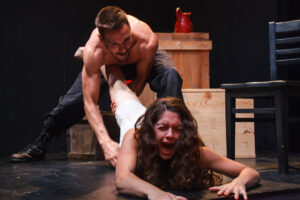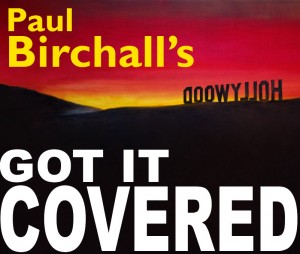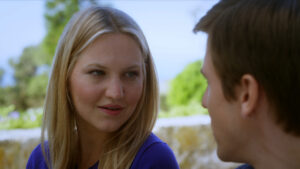Sounds of Riddance:
Meg Foster, Sissy Boyd and Wes Walker, on the motions and emotions between words
BY BILL RADEN
Meg Foster may be best known for her haunting, almost supernaturally unsettling, milky blue eyes, a quality that has made her a natural fit for horror, science fiction and thrillers in film work that spans three decades and includes Sam Peckinpah’s The Osterman Weekend (1983) and John Carpenter’s Burroughsian alien-invasion classic, They Live (1988), and, more recently, Rob Zombie’s rock “n’ roll horror film, The Lords of Salem (2013).
Here in Los Angeles, the actress may be best remembered for her stage work at the old LATC and for playing Regan in Norwegian director Stein Winge’s darkly expressionistic King Lear.
With Riddance, the evening of hybrid performance art/theater that opened on Friday at Highland Park’s Moryork Gallery, Meg Foster returns to the stage, lured by the opportunity to work with its authors, the experimental playwright-performer Sissy Boyd and her frequent collaborator, playwright-director Wes Walker, who each contribute a one-act for the show – Boyd’s Movement For Two Voices, and Walker’s A Man Entire.
Stage Raw recently sat down with the three artists to talk about their collaboration.
Stage Raw: Meg, you’ve done stage work and, obviously, film. What qualities in Sissy’s work do you find so inviting?
Meg Foster: It’s extraordinary. It’s not like anything [else]. I’ve been given a gift. It’s very beautiful. . . and it’s haunting. I read it when Wes sent it to me. I did not read it out loud. I did not read it to anybody. And then, I think when I met you both at Sissy’s house, I just said, “You birthed this. This is life.” And Sissy said, “I did it one word at a time.” So thank you. And that’s what helps me remember.
Because to speak it — if one itty-bitty syllable is off, I might get two words away and go, “Where did it go? What did I miss?’ It’s a very different rhythm. It’s not like learning lines, it’s not like reciting a poem. Do you know? It’s very different.
Wes Walker: I was thinking of that. Like, what is it about this piece that’s not a poem? That [makes it] theater — or is it? And part of it just has to do with the dynamic. It’s the two people [Voice One and Voice Two], and it is about live speech — and witnessed live speech, through an audience joining and somehow finishing the relationship between the two. So to even further what Meg is saying, it’s not just that a person learning their lines has to remember everything in order to kind of be able to remember it, it’s that you also have to maintain a connection to the other person and then to the staged space that keeps it even more connected. It’s a real tightrope act.
Sissy Boyd: One thing for me was that first meeting, hearing Meg’s voice, I had never heard something so [exactly] match what I had heard in my head. I can’t even tell you how amazing that was. There were tears and this emotion and this silent sound echoing [in her reading]. I mean, I was just floored.
MF: Your words.
WW: I felt the same thing. That the first read-through of it, and then the second read-through of it, each one seemed to be almost immediately stage-worthy. Then it instantly struck me, the fear that, “Oh, I’ve got to be careful not to fuck this up!” That I’ve just got to be on guard not to, like, get in the way of this in any way. Just only help it.
MF: I remember one day you said — you sent me an email — you said, “We will start the descent.” Right? And I was, like, “Oookay.” You know? But [the piece] reminds me of a labyrinth. Because you have these two voices. And you enter a labyrinth, and the idea is to in some way exit. But the experience depends on where you turn. You can turn this corner, you can go straight. How you turn is where you’re going to go, and it changes the whole path. But you will never leave the labyrinth the same way you came in. And this is what this piece is about.
SR: Sissy, you were a dancer with Martha Graham. And you’ve said that dance and movement are present in your writing. Is that movement in the language or in the blocking of Movement For Two Voices?
WW: It’s totally in both — one of the voices will be representing movement only through things spoken in the moment, and the other body will be responding to that through movement on the stage.
MF: And time.
WW: Yeah. And time. When we’re talking about stillness and movement from stillness, so much of Sissy’s work — and the whole raison d’être of her getting into writing at all — was that she went through this major episode of Guillan-Barré syndrome and was paralyzed for months. She had only expressed herself as a dancer — really completely defined herself that way.
SB: I wasn’t interested in words at all. And then this kind of … I feel like it pushed me toward words. I didn’t even know it was happening, but I had to figure out something to do.
MF: It’s amazing when one is debilitated so profoundly — because you are a [dancer] and you did it as a child, and it became your life and your way to create — to go through that horror and not knowing. And what came from it was a gift. For me, the gift of your words.
SR: Can you describe the evening?
WW: My piece, which was always considered in tandem [with Sissy’s], is almost like a reaction to hers in that hers kind of represents the quintessence of female strength. Again, I don’t want to give too much away, but its mother-and-daughter thing and everything. And mine is a panicked reaction to that — what if that weren’t there? What if that were missing? What if we fucked up our ecology to a point where that can’t be there anymore?
SR: Wes, you started out in music, and just as dance and movement are present in Sissy’s language, music and rhythm and sound seem key to yours.
WW: And it’s kind of hard to talk about what that is, because it’s just a sense, right? For Sissy, when you watch Sissy move around a stage, there’s a sense — that you can’t really describe — that she has when she moves her skirt around. And that’s the same thing with the sound of a text or a play. You just know when it sounds wrong, and there are certain aspects to it — you kind of know what kind of sound an audience can hold onto.
SB: I always think of Wes as the pure poet. He’s the purest. There’s a purity, do you know what I mean? There’s an intelligence that Wes has that the poetry is equal to. Some people have one or the other, Wes has both. It’s phenomenal.
WW: The thing is — and I don’t know how inviting it sounds — but both these pieces, they do ask something from the audiences. We do try to include them in the realization of what these things are. So it’s hopefully not obscure to them, but there is an amount of help they can give us in completing the whole thing, right? And I think both pieces are honest about that. Because the way we approach these things are kind of open, and they allow for some unknowns, we ask that the audience joins us in resolving them as performance.
SR: You can’t attend passively.
WW: Like I’ve said to Sissy over and over, is that her work rewards attention; the more you give it, the more it will give you. But you have to pay attention — you have to listen in a way, which isn’t always easy. We try to stage it in a way that allows that and doesn’t distract too much.
Part of what I’m trying to do is be aware of what this gallery is, this wonderful [Joseph} Cornell box of a space. And so we’re trying to, you know, deal with that and kind of live next to that — these anachronistic things that are beautiful together and very chosen.
Riddance runs Fridays and Saturdays at 8 p.m. and Sundays at 2p.m., March 21 through April 6. Tickets to all performances are $15. MorYork Gallery is located at 4959 York Blvd. in Los Angeles, California 90042. There is ample street parking. For reservations and information, call (323) 660-8998



